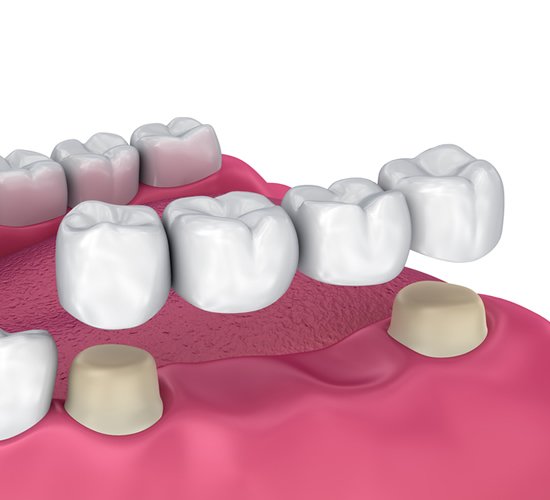- Bizi Arayın +90 501 329 7812
- Çalışma Saatleri 09:00 - 19:00

The process performed on teeth that have experienced advanced tissue loss due to caries, trauma or any other reason and cannot be restored with filling is called crown (porcelain veneer). Restoration treatment performed by taking support from the teeth adjacent to the extraction area instead of lost teeth is called bridge. A portion of the teeth to be treated is taken by removing a portion equal to the area to be covered by the crown-bridge material. Then, this measurement is sent to the prosthesis laboratory, and the treatment is completed by first rehearsing the infrastructure and then rehearsing the porcelain. Types of porcelain crown bridges Porcelain crown bridge materials; It is divided into two as metal-supported porcelain restorations and metal-free full porcelain restorations. Since the light transmittance of full porcelain is better, a more natural image is provided. Although metal is not visible from the outside, it causes a duller appearance compared to full porcelain. What are the advantages of porcelain crown-bridge process? Making crowns on teeth with excessive material loss both restores the aesthetic and function of the lost tooth tissue and preserves the remaining tooth tissue. -It increases the patient's quality of life by eliminating the difficulties experienced in chewing efficiency and speaking in cases of tooth loss. What happens if a porcelain crown-bridge is not made to replace the lost teeth? The teeth adjacent to the extracted teeth move towards the extraction space and the tooth that comes to the closure on the opposite jaw of the extracted tooth moves towards the extraction space. These movements negatively affect the function and aesthetic appearance of the relevant areas. It reduces the level of gums and bones. As a result of these negative changes, the patient may have to undergo more costly, more comprehensive and longer-term treatments. Decreased chewing efficiency can lead to digestive system problems.
What should be considered after porcelain crown-bridge treatment? Paying attention to oral hygiene after this treatment is very important for the restorations to remain in the mouth for many years. The applied teeth, especially the tooth-gingival junction boundaries, should be brushed very well. Patients undergoing bridge treatment should clean the edentulous area under the bridges with specially designed dental floss called “superfloss” after brushing their teeth. Regular dental check-ups and regular dental scaling should not be neglected.
Copyright © 2021 | DAC | by JETDİJİTAL